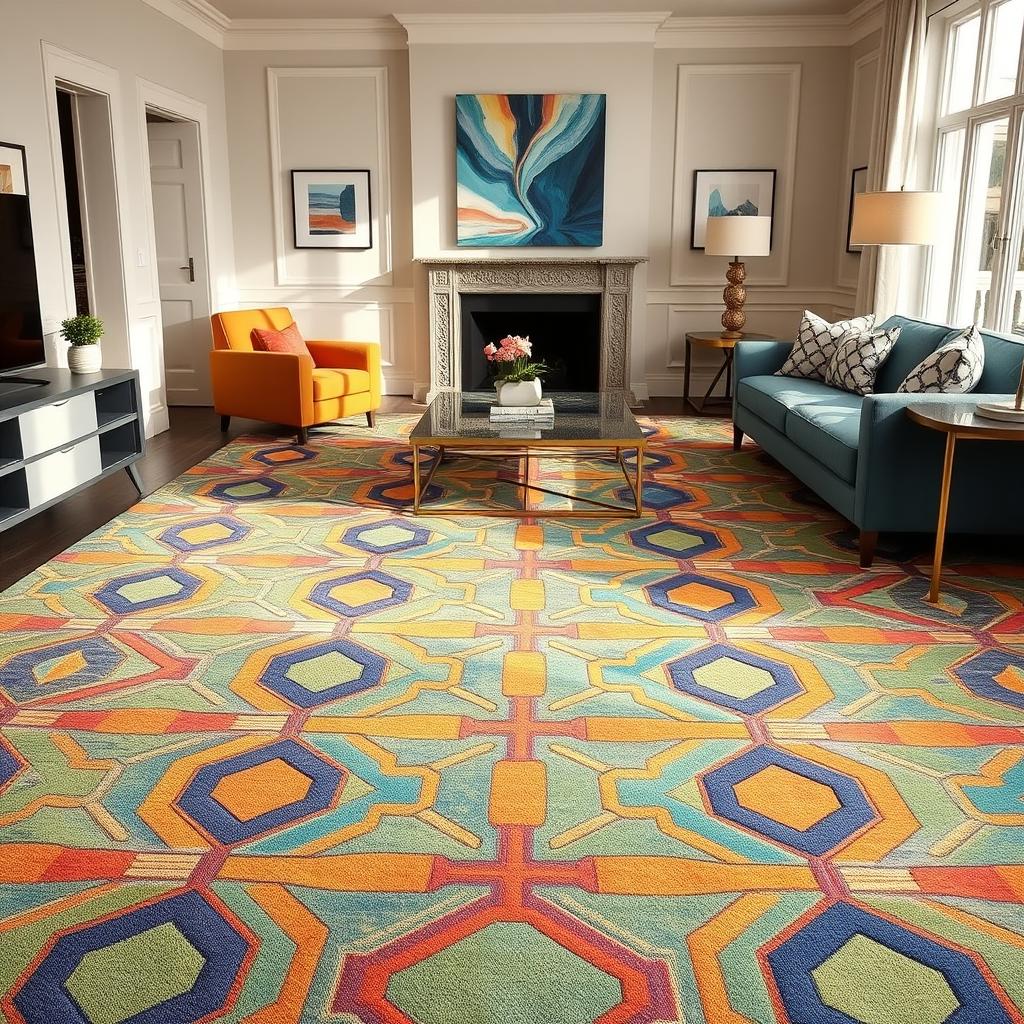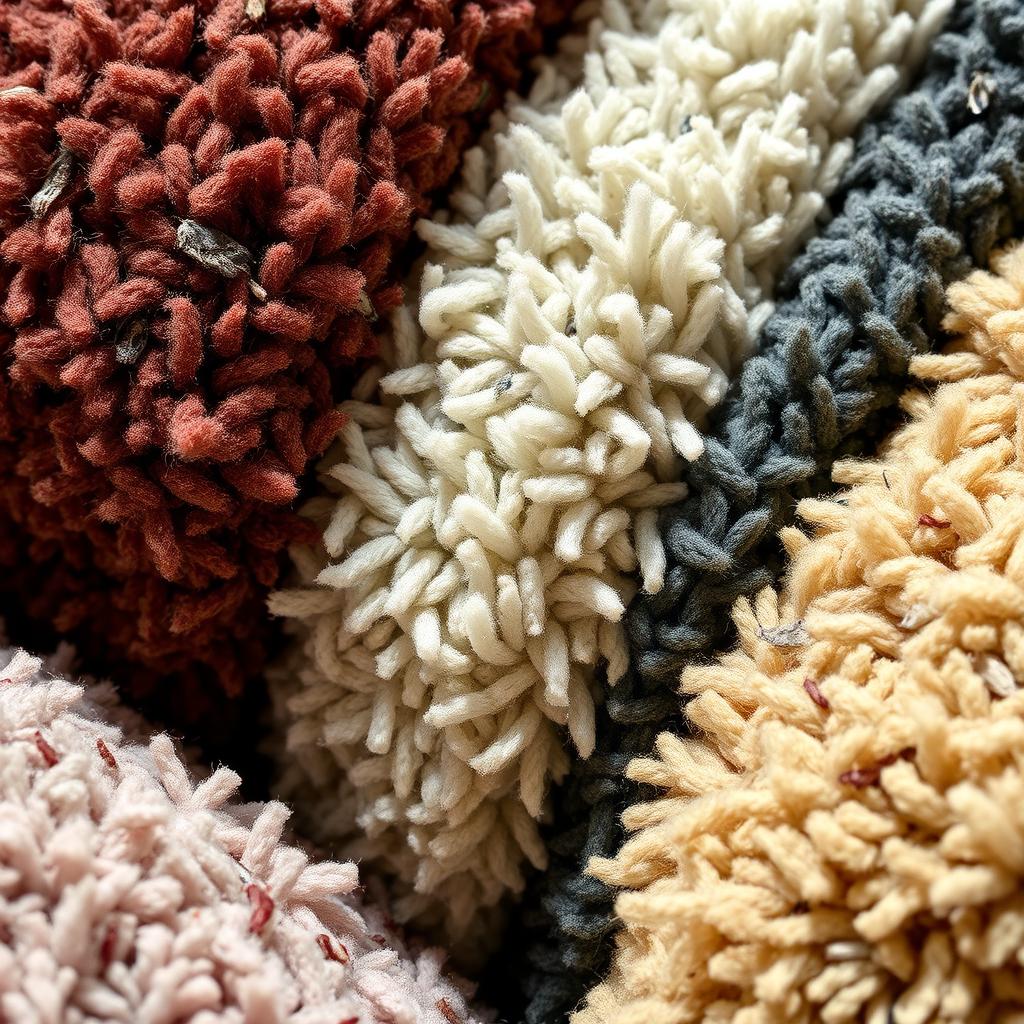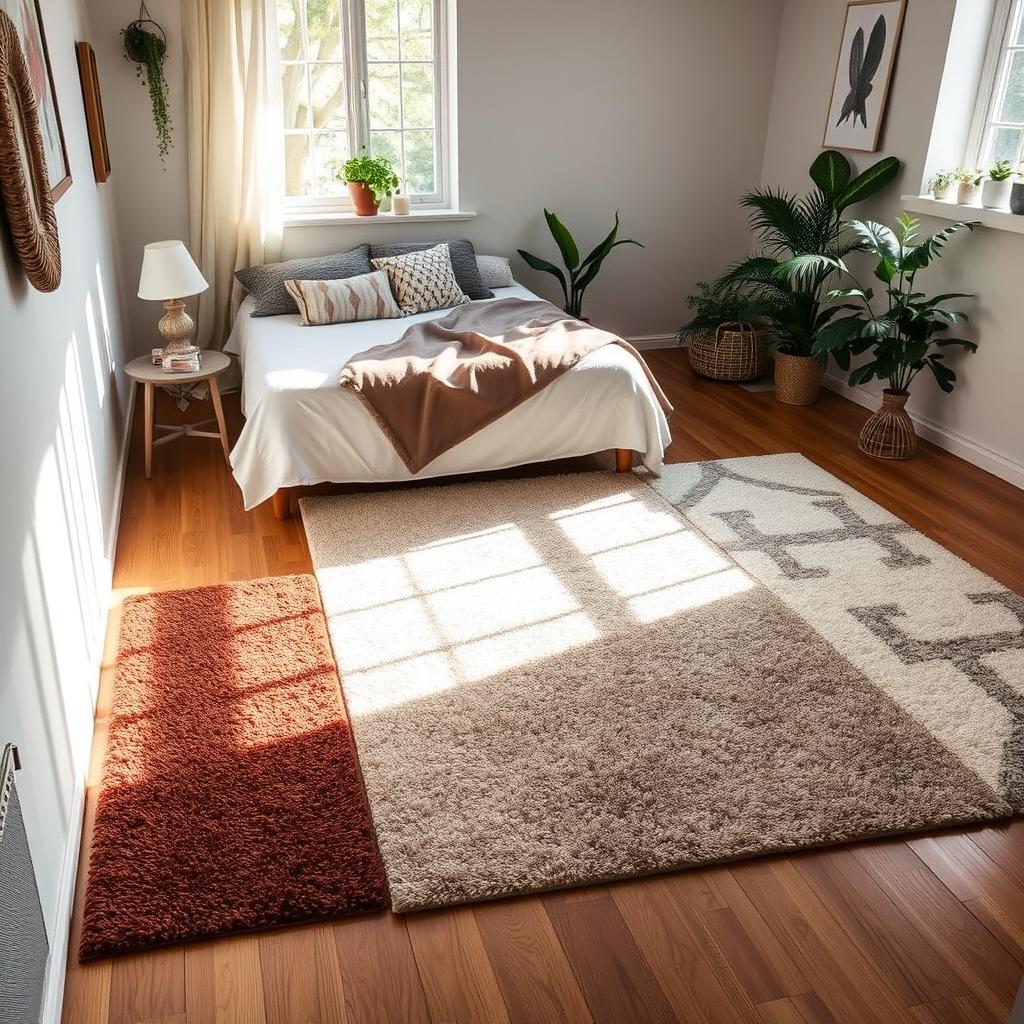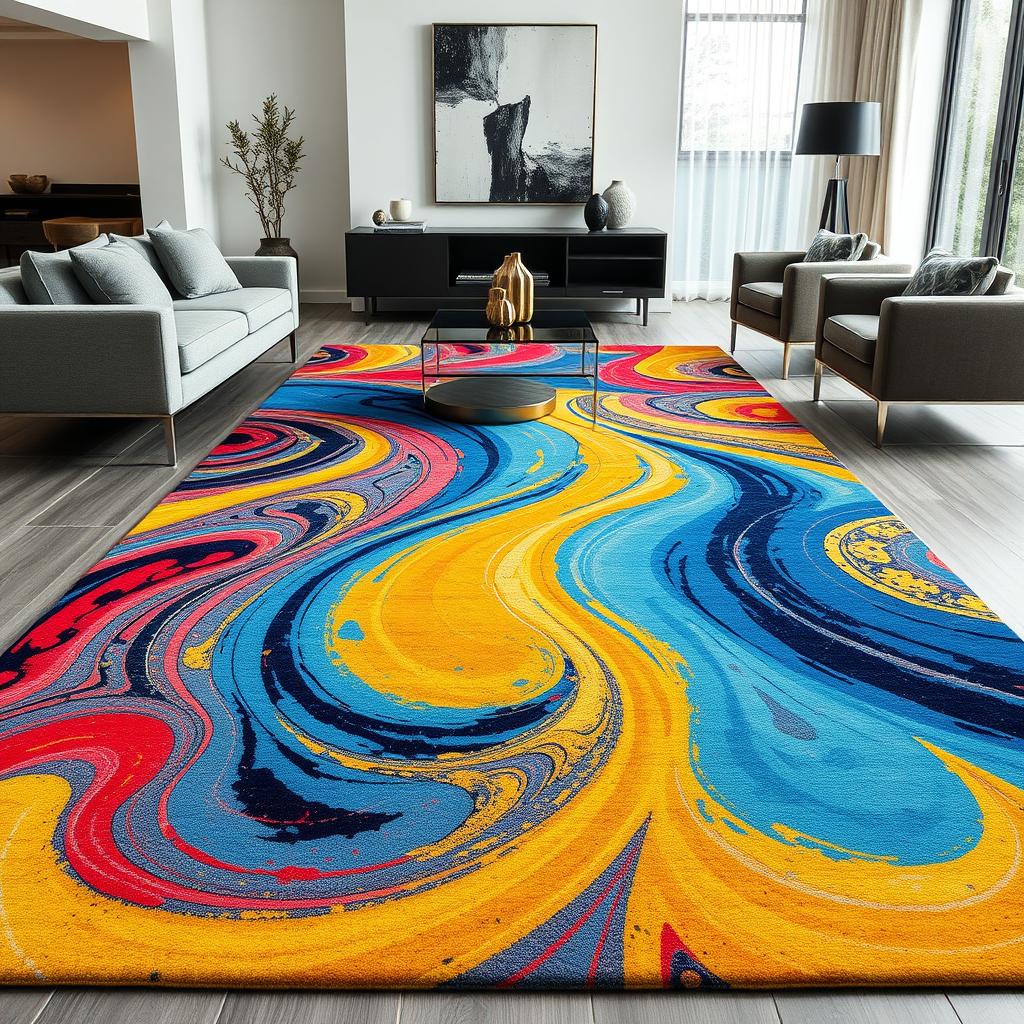Are you tired of the same old carpets in every home? It’s time to find a carpet that shows off your style and makes your home feel special. In this guide, we’ll help you pick the perfect carpet for your home.
Click to use Silverigroup personal shopper services
Key Takeaways:
- Discover the diverse range of carpet types and materials to find the perfect fit for your home
- Assess your lifestyle needs and home environment to make an informed carpet selection
- Explore color and design strategies to coordinate your carpet with your existing decor
- Understand the importance of carpet texture and pile height in terms of durability and comfort
- Learn how to navigate the budget and quality considerations when choosing a unique carpet
Understanding Different Carpet Types and Materials
Choosing the best carpet to choose for your home can feel overwhelming. There are many options, from natural fibers to synthetic materials. Each carpet style has its own benefits and characteristics. Knowing about the different floor coverings helps you pick the right one for your needs and taste.
Natural Fiber Carpets
Natural fiber carpets, like wool and sisal, add timeless elegance and warmth. Wool is known for its durability, softness, and natural stain resistance. Sisal offers a rugged texture, perfect for busy areas or adding natural flair to a room.
Click to buy antique rugs from Silverigroup
Synthetic Carpet Options
Synthetic carpet styles, including nylon and polyester, are popular for their affordability and easy care. Nylon is strong and durable, ideal for busy homes. Polyester is softer and more affordable, great for those on a budget.
Specialty Carpet Materials
For a unique and eco-friendly option, consider bamboo and recycled fibers. Bamboo carpets are sustainable and offer a distinct look. Recycled fiber carpets are made from reused materials, perfect for eco-conscious homeowners.
The best carpet to choose depends on your style, budget, and lifestyle. By exploring the various carpet styles and materials, you’ll find the ideal floor coverings to enhance your home’s comfort and beauty.

Assessing Your Home’s Needs and Lifestyle Requirements
Choosing the perfect carpet for your home is more than just looks. It’s about finding one that fits your specific needs and lifestyle. This step is key to picking a carpet that looks great and holds up to your daily life.
When picking out carpet for a bedroom, think about foot traffic, pets, and allergies. A busy area needs a durable and stain-resistant carpet. But a quiet room might do better with something softer and more luxurious.
- Evaluate the level of foot traffic in each room
- Consider the presence of pets and their impact on the carpet
- Identify any allergy concerns that may necessitate hypoallergenic materials
- Assess the climate in your region and how it may affect the carpet’s performance
By assessing your home’s needs and lifestyle requirements, you can focus on what matters most. This could be durability, stain resistance, or comfort. This way, you’ll find the best carpet quality for your unique needs.
Color Selection Strategies for Home Carpeting
Choosing the perfect carpet for your home is more than just material and texture. The carpet’s color greatly affects a room’s look, matching or contrasting with your decor. Learning how to pick the right color can make your living space look amazing.
Coordinating with Existing Decor
When picking a carpet design, think about how it will match your room’s colors and textures. Choose colors that either go well with or stand out against your walls, furniture, and accessories. This careful choice makes your carpet trend look great and tie the room together.
Impact of Natural Light
Natural light changes how your carpet looks. Lighter colors make rooms feel brighter and more open. Darker colors make spaces cozy and intimate. Think about how sunlight in your room will change your chosen carpet‘s color.
Color Psychology in Interior Design
- Warm tones like reds, oranges, and yellows bring energy and warmth.
- Cool colors such as blues and greens calm and soothe.
- Neutral shades like grays and beiges are versatile and easy to add color to.
Knowing how colors affect us can help you pick a carpet that matches your room’s mood and feel.

Carpet: Custom Design Options
A custom or bespoke carpet can totally change your living space. Unlike common carpets, handmade rugs and custom carpeting let you make a carpet that’s all yours. It shows off your style and fits perfectly with your home’s look and feel.
Starting with a custom carpet means you get to pick everything. Bespoke carpets let you choose from many materials, patterns, and textures. This way, you can make a carpet that’s just right for you, whether it’s bold or simple.
With the help of skilled carpet makers, you can pick colors, designs, and how it’s made. This makes sure your carpet fits your space perfectly. It also adds a special touch of elegance to your home.
When picking a custom carpet, think about the room’s size, how much people walk on it, and the light. This helps make sure your carpet looks great and works well for years.

Carpet Texture and Pile Height Considerations
Choosing the right carpet for your home involves looking at texture and pile height. These factors affect how the carpet looks and how well it lasts. Knowing the difference between low pile and high pile carpets helps you pick the best one for your space.
Low Pile vs. High Pile Benefits
Low pile carpets are sleek and modern, with a height under 1/2 inch. They’re easy to clean and look great in busy areas like hallways. High pile carpets, on the other hand, are soft and cozy, adding warmth to rooms. They’re perfect for places where you want to relax.
Durability Factors
The height of the pile affects how durable the carpet is. Low pile carpets are tough and last longer in busy spots. High pile carpets are soft but might get worn down faster. Think about how much use your carpet will get when choosing between how to choose carpet for sofa or area rugs.
| Carpet Characteristic | Low Pile | High Pile |
|---|---|---|
| Appearance | Sleek and modern | Luxurious and cozy |
| Ideal Placement | High-traffic areas | Bedrooms and living rooms |
| Durability | More resilient | More susceptible to wear |
Understanding carpet texture and pile height helps you choose the right one. It should match your home’s style and meet your needs.

Room-Specific Carpet Selection Guidelines
Choosing the right carpet for your home can make a big difference. It affects how each room looks and feels. When picking a carpet for your home, think about what each room needs. This way, you can find a unique carpet that fits your style and lifestyle.
Bedrooms: Comfort and Softness
Bedrooms should feel cozy and inviting. Choose carpets with a high pile and plush texture for comfort. Options like wool or nylon are soft and durable.
Living Rooms: Durability and Style
Living rooms get a lot of use, so durability matters. Look for carpets with a medium pile and tight weave. Patterned or textured carpets can also add style and hide wear.
Stairs and Hallways: Traction and Resilience
Stairs and hallways need to be safe and last long. Choose carpets with a low pile and strong build. Synthetic or loop-pile designs are good for these areas.
Basements and Laundry Rooms: Moisture Resistance
Basements and laundry rooms need carpets that handle moisture. Synthetic fibers or moisture-wicking materials are best to prevent mold and mildew.
Think about each room’s needs when picking a carpet. The right carpet can make your home look and feel better. Take your time to find the perfect floor carpet for home.
| Room | Carpet Considerations | Recommended Carpet Type |
|---|---|---|
| Bedrooms | Comfort, softness | High pile, plush texture (e.g., wool, nylon) |
| Living Rooms | Durability, style | Medium pile, tight weave (e.g., patterned, textured) |
| Stairs and Hallways | Traction, resilience | Low pile, sturdy construction (e.g., synthetic, loop-pile) |
| Basements and Laundry Rooms | Moisture resistance | Synthetic fibers, moisture-wicking materials |
Budget Planning and Quality Assessment
Choosing a unique carpet for your home involves budget planning and quality assessment. The cost per square foot varies widely. It’s important to understand the long-term value and maintenance costs.
Cost per Square Foot Analysis
Start by evaluating the cost per square foot of different carpets. The type of material, brand, and retailer can affect the price. Comparing costs helps you see the value of each carpet and choose within your budget.
Long-term Value Considerations
The initial cost is important, but so is the carpet’s long-term value. Durability, stain resistance, and lifespan impact the carpet’s true cost. High-quality carpets may cost more upfront but offer better value and save money in the long run.
Warranty and Maintenance Costs
Assessing a carpet’s quality also means looking at its warranty and maintenance costs. A good warranty offers peace of mind, while knowing maintenance needs helps budget for upkeep. Reviewing warranty and maintenance details ensures you choose wisely within your budget.
| Carpet Quality Considerations | Low-Cost Carpet | High-Quality Carpet |
|---|---|---|
| Cost per Square Foot | $2 – $5 | $5 – $15 |
| Durability | Lower | Higher |
| Warranty | Limited | Comprehensive |
| Maintenance Costs | Higher | Lower |
| Long-term Value | Lower | Higher |
By considering cost, long-term value, and warranty and maintenance, you can choose a carpet that fits your budget and quality needs.

Professional Installation vs DIY Approaches
Choosing between professional carpet installation and doing it yourself is a big decision. The DIY option might seem appealing, but it’s important to consider the pros and cons. This ensures your carpet installation is successful and lasts a long time.
Professional installers have the skills and tools needed for a perfect job. They know how to measure, cut, and install your carpet right. This reduces the chance of mistakes and uneven floors. Plus, they often provide warranties, giving you peace of mind.
Going the DIY way can save money and be rewarding if you’re detail-oriented and willing to put in the work. But, it needs a good understanding of the installation process. Without proper subfloor prep, carpet cutting, or edge securing, you might face wear, tripping hazards, and a poor outcome.
FAQ: Choose a unique carpet for your home
What are the different types of carpets available?
Carpets come in many types. You can choose from natural fibers like wool and sisal. Or synthetic materials like nylon and polyester. There are also specialty fibers, including bamboo and recycled ones, each with unique benefits.
How do I choose a carpet that meets my home’s needs and my lifestyle?
Think about your home’s needs and your lifestyle when picking a carpet. Consider foot traffic, pets, allergies, and climate. This helps you find a carpet that’s durable, stain-resistant, or hypoallergenic, fitting your home and lifestyle perfectly.
How do I coordinate carpet color with my existing decor?
To match carpet color with your decor, think about natural light and color psychology. This helps you pick a carpet color that complements your space and shows your style.
What are the benefits of choosing a custom or unique carpet?
Choosing a custom or unique carpet lets you create a one-of-a-kind floor. It perfectly matches your space and style. This is a great way to show your individuality and add a personal touch to your home.
How do I choose the right carpet texture and pile height for my needs?
Carpet texture and pile height affect its look, feel, and durability. Compare low pile and high pile carpets. Think about foot traffic and wear to make the right choice.
What are the specific considerations for selecting carpets for different rooms in my home?
Each room has its own needs. Consider moisture, sunlight, and wear for different rooms. This helps pick the right carpet for bedrooms, living rooms, stairs, and basements.
How can I balance quality and affordability when budgeting for a new carpet?
To balance quality and cost, look at the cost per square foot. Consider long-term value and warranty costs. This ensures you get the best value for your money.
Should I hire a professional for carpet installation or try a DIY approach?
Professional installation offers a seamless, high-quality job. DIY can save money but needs skills and tools. Think about your abilities and the job’s complexity to decide.

